Light-weight real-time event detection with Python
Carson J. Q. Farmer
@carsonfarmer
carsonfarmer.com
carsonfarmer@gmail.com
github.com/cfarmer
Hunter College, City University of New York
695 Park Ave, New York, NY, 10065
Social information sources
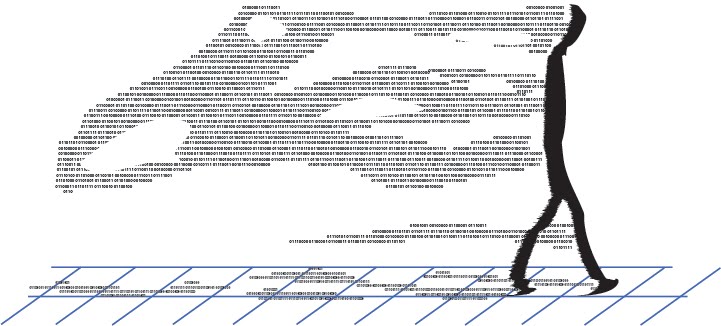
Source: Digiself
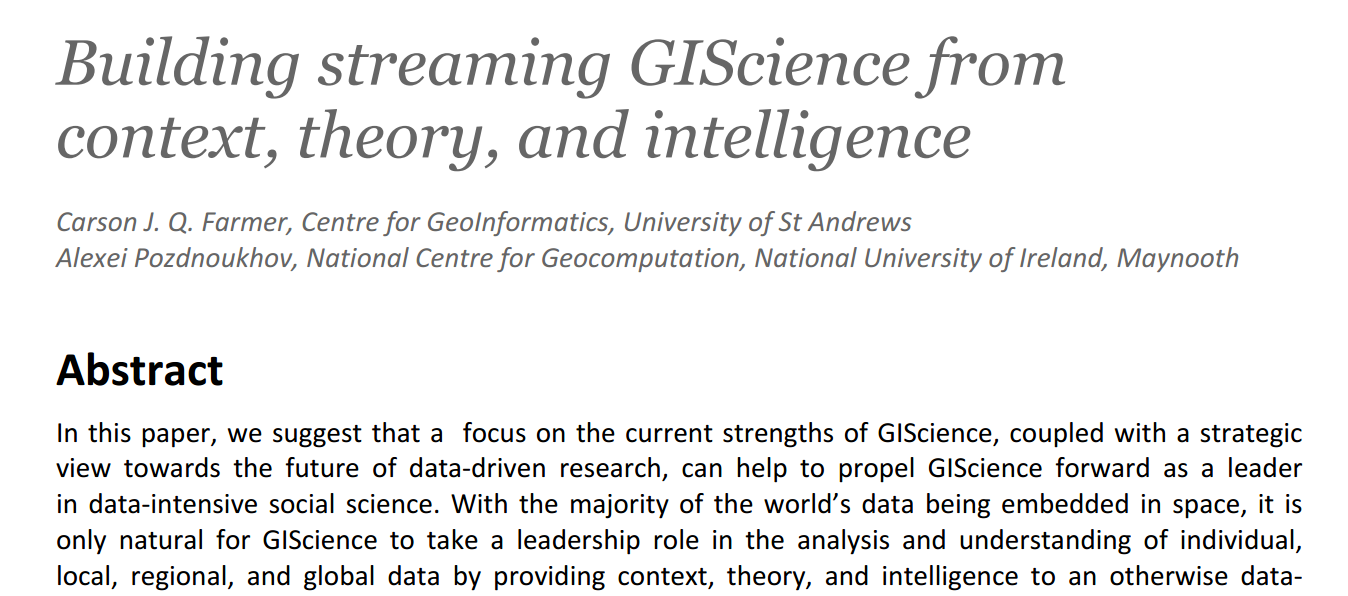
Streaming framework
Traditionally, this type of analysis would require a large investment in heavy-duty computing infrastructure, however, we suggest that a focus on real-time analytics in a lightweight streaming framework is the most logical step forward.
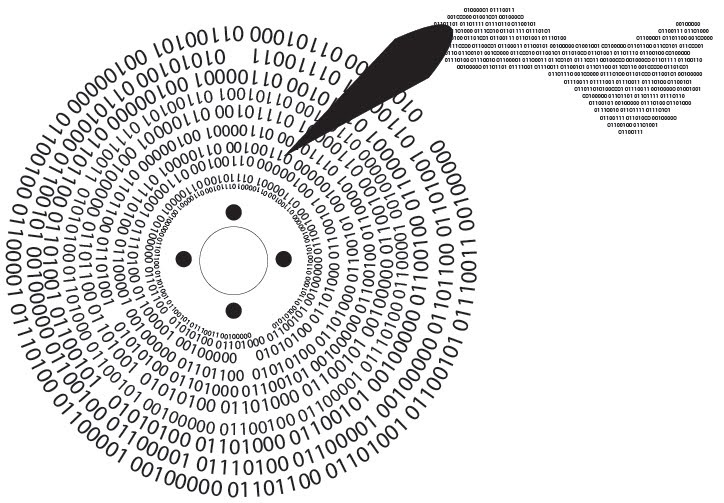
Source: Digiself
So what are we doing?
- Stream Twitter data (location-based)
- Online Latent Semantic Analysis
- Gridded count of geo-tweets
- Kernel density estimation (KDE)
- Normalize tweet density
- Identify high density areas
- Feedback results
- tweepy
- gensim
- python-geohash
- scipy/numpy (fast_kde.py)
- numpy
- numpy
- pico+leaflet+D3js
Using online Latent Semantic Analysis (LSA) from the gensim Python package, we extract 'topics' from tweets in an online training fashion. To maintain real-time relevance, the topic model is continually updated, and depending on parameterization, can 'forget' past topics. Based on a set of learned topics, a grid of spatially located tweets for each identified topic is generated using standard numpy and scipy.spatial functionality. Using an efficient streaming algorithm for approximating 2D kernel density estimation (KDE), locations with the highest density of tweets on a particular topic are located.
Twitter part is easy
import tweepy
import simplejson
import sys
consumer_key = ''
consumer_secret = ''
access_token_key = ''
access_token_secret = ''
auth = tweepy.OAuthHandler(consumer_key, consumer_secret)
auth.set_access_token(access_token_key, access_token_secret)
BOUNDING_BOX = [xmin, ymin, xmax, ymax]
class CustomStreamListener(tweepy.StreamListener):
def on_status(self, tweet):
print('Ran on_status')
def on_error(self, status_code):
print('Error: ' + repr(status_code))
return True # Don't die!
def on_data(self, data):
document = simplejson.loads(data)
# Do something awesome with the tweet info...
sapi = tweepy.streaming.Stream(auth, CustomStreamListener())
sapi.filter(locations=BOUNDING_BOX)
LSA part isn't easy
- Latent Semantic Analysis
- Analyzing relationships between a set of documents and the terms they contain by producing a set of concepts related to the documents and terms
- Idea is that words that are close in meaning will occur in similar pieces of text
- Latent Semantic Indexing (LSI)
- Tokenizing (
ark-twokenize-py), remove common and unique words (stopwords.py)- Twitter NLP and Part-of-Speech Tagging
- Snowball String Processing Language
- Bag-of-words, and/or tf–idf (term frequency–inverse document frequency)
- Decay < 1.0 to favor new data trends in input stream
- Possibly try Hierarchical Dirichlet Process (because we don't have to pick # of topics [and gensim has it])
Gridded topic counts
- Geohash all coordinates to given scale (optimize for urban environment)
- Convert back to x, y coords (now gridded)
- Count unique tweets of given topic
- Normalize counts (by current count and tweet 'population'
Online (kinda) KDE
- Gaussian kernel density estimate
- Convolution of Gaussian kernel with the 2D histogram
- Typically several orders of magnitude faster than
scipy.stats.kde.gaussian_kdefor large (>1e7) numbers of points- Can handle ~billion points already without too much trouble…
- Streaming framework
- Stream 2D histogram binning process
- Run convolution on this when needed
- Supports weighted KDE
- Take topic component weights when computing KDE
Identify 'events'
- Locate high-density areas
- Right now…
- Let 'user' browse current topics & select for viewing
- Eventually more automation
- Have to get scale right…
- We're focusing on urban areas (city scale)
#batkid
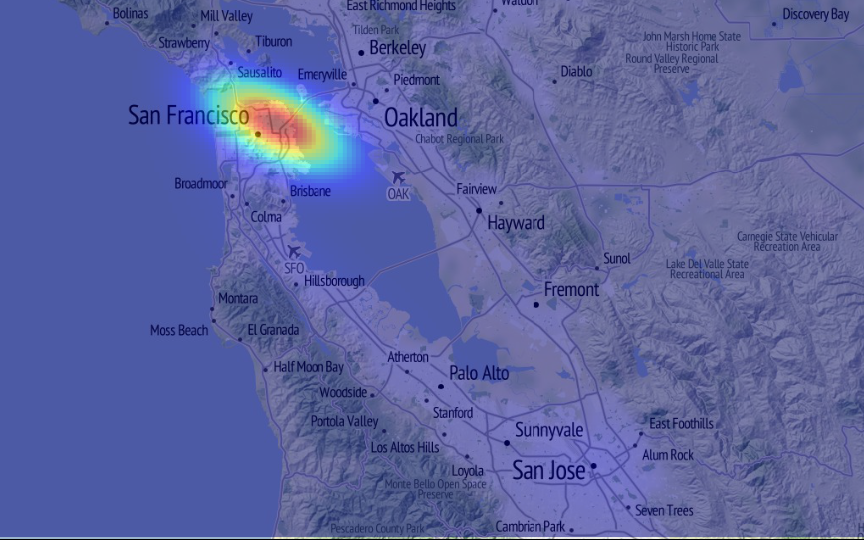
concert
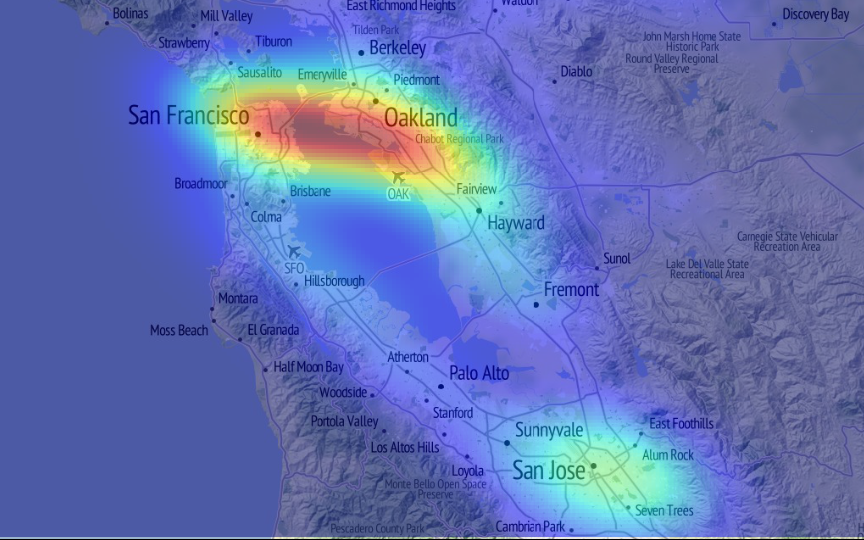
#drake
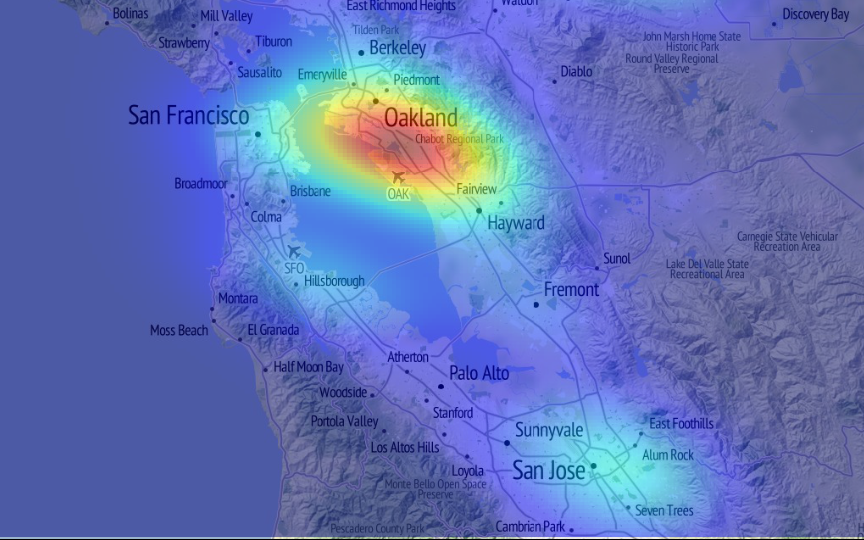
Feedback results
Pico- very small web application framework forPython- Bridge between server side
Pythonand client sideJavascript
- Bridge between server side
Picois a server, aPythonlibary and aJavascriptlibrary!- Server is a WSGI application
Picoallows you to stream data fromPythontoJavascript- Simply write your function as a
Pythongenerator!
- Simply write your function as a
Write a Python module
# example.py
import pico
def hello(name="World"):
return "Hello " + name
Start the server
python -m pico.server
Call your Python functions from Javascript
<!DOCTYPE HTML>
<html>
<head>
<title>Pico Example</title>
<script src="/pico/client.js"></script>
<script>
pico.load("example");
</script>
</head>
<body>
<p id="message"></p>
<script>
example.hello("Fergal", function(response){
document.getElementById('message').innerHTML = response;
});
</script>
</body>
</html>
Want that to stream?
import pico
import gevent
@pico.stream
def stream():
for line in open('long_file.txt'):
yield line
gevent.sleep(0.1)
(Plus some other gevent magic)
'Normal' call from Javascript
example.stream(function(line){
console.log(line)
})
Where are we at now?
- Code and 'science' works for the most part
- Nowhere near 'production' ready
- Web-framework is non-existant (but getting ready)
- My collaborator (
picoauthor) just got a 'real-job' and got married
- My collaborator (
- Very happy with how lightweight and 'easy' this is to setup
- You can pretty much just drop
anacondaor similar on a server and this will work
- You can pretty much just drop
What did we learn?
- Twitter had the x and y coordinates reversed for a while :-p
- People talk about themselves a lot!
- Most tweets at least contain
i'm,my,me, etc… - Stopwords and good tokenizing are important!
- Most tweets at least contain
- English language is often ambiguous
- (i.e., this stuff is hard)
- Geography is still important
- Many tweets have spatial component and twitter trends do vary geographically
#batkid versus everything
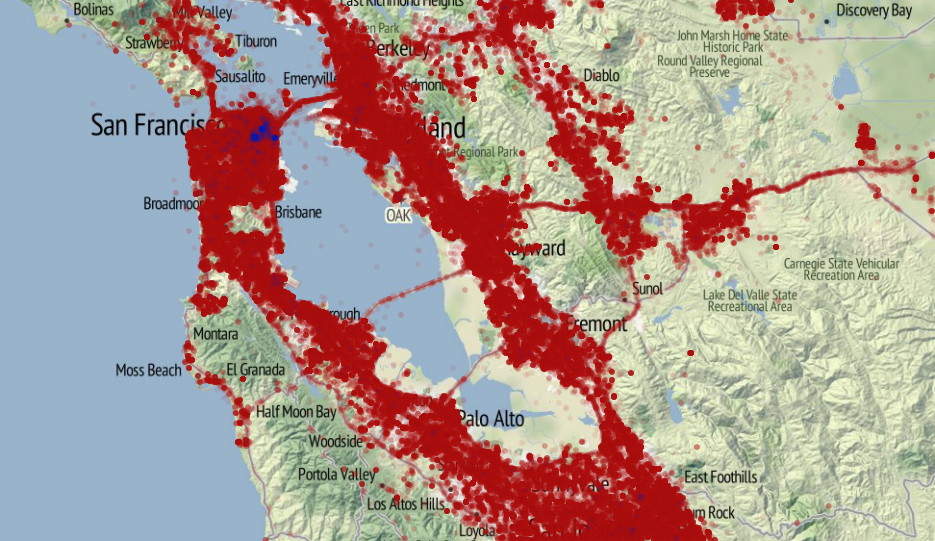
Light-weight real-time event detection with Python
Carson J. Q. Farmer
@carsonfarmer
carsonfarmer.com
carsonfarmer@gmail.com
github.com/cfarmer
Hunter College, City University of New York
695 Park Ave, New York, NY, 10065